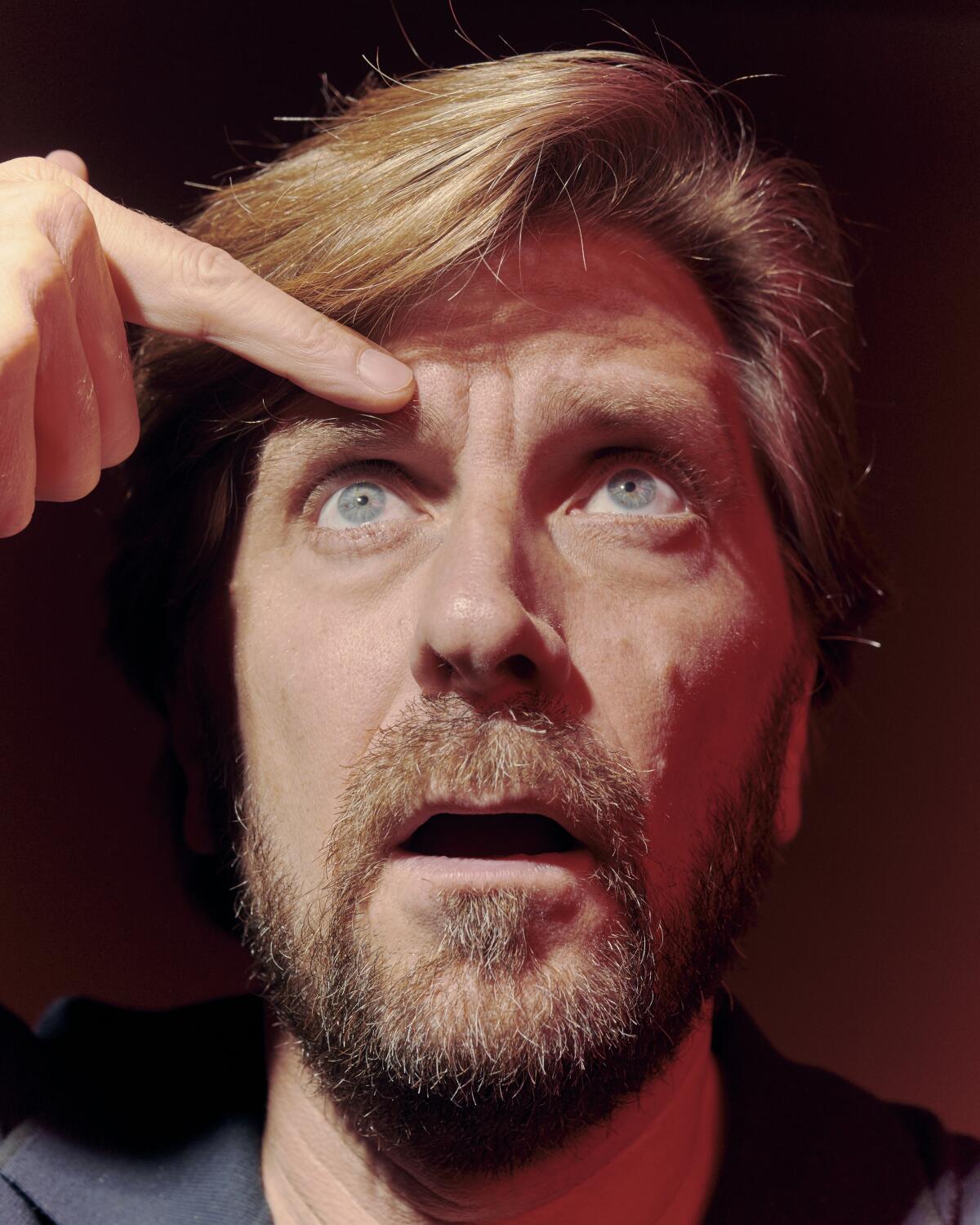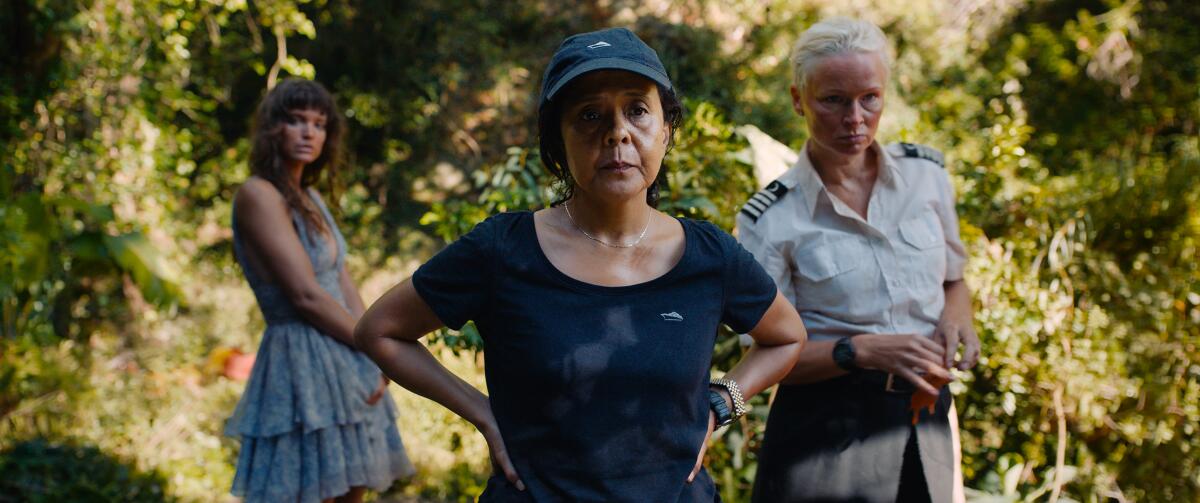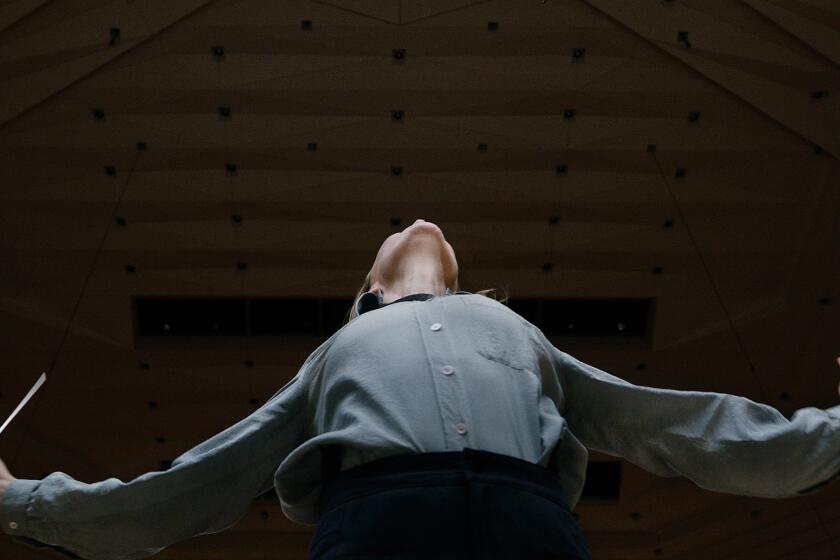Ruben Östlund’s confessions of a Swedish director who freaks out … a lot

“You learn how to ride the roller coaster with your psyche, tackle the ups and downs with gallows humor, “ writes Ruben Östlund of the trials of making a film.
- Share via
“The only thing that is generally consistent in filmmaking is that there is nothing generally consistent,” my teacher at the film school in Gothenburg, Sweden, always used to say. This insight has become a sort of mantra for me in all the uncertainty that comes with making a movie. Perhaps this uncertainty stems from the fact that my film school didn’t give us the right tools, but I prefer to think that creativity and uncertainty go hand in hand.
I have a colleague who, a week into shooting his debut feature, stopped wearing his seat belt. He simply thought the film was so catastrophically bad that he saw a potential car accident as a liberation. Death before the shame of failure. I think many can relate to this. Later you learn how to ride the roller coaster with your psyche, tackle the ups and downs with gallows humor, and make fun of colleagues who don’t wear their seat belts.
Working on “Triangle of Sadness” was no exception. Every morning when I got into the production car with cinematographer Fredrik Wenzel, we looked at each other to see if the seat belt was on or off. “The belt is on — yeah, this is going well!” we laughed. When things went worse, we didn’t laugh. Then we stared out the windows in silence. On such a morning, the sight of a park keeper cutting the grass made us dream of a simpler job, a simpler life. Romanticizing the working class? Absolutely! Did I want to change jobs? Never. The fear of failure is not nearly as frightening as the thought of my newly acquired privileges as a respected director being taken away from me.
Best picture is the only Oscars category that uses a preferential ballot, where voters rank all 10 nominees. Here’s how our critic would rank them.
A filming day often starts optimistically: Maybe today is one of those days where everything goes smoothly? With respect to everyone on the team, this rarely — very rarely, very super rarely — happens. Usually, these hopes die as soon as the monitor comes on. It never looks like you thought it would and problems always take longer to fix than anticipated. The hope may return slightly before the actors arrive to play through the scene for the first time. With that comes the equivalent of the ice-bucket challenge. An icy-cringe shock. A good trick now is to try to buy yourself time by doing many takes. In fact, that’s a little bit of my trademark. Take 1, 2, 3, ”Thanks, great! Let’s do one more.” Every time the team is getting ready for a new take, I get some time to figure out what the hell I should do.
Take 4, 5, 6 ... (Tip for aspiring directors: A smart tactic is to say, “Give me a suggestion!” It sounds nonchalant and hides that you don’t know what you are doing.) Somewhere by Take 7 to 9, I’ve had enough time to come up with a “substantial” idea. I enthusiastically convey it to the actors in a long, hard-to-understand harangue. Take 10 ... Break for lunch. “What the hell? RIKARD!?” (Rikard is the FAD; a FAD is someone who is considered OK to scream at on a film set.) “How the hell have you planned this shooting schedule!?” I often have lunch alone while watching the failed takes from the morning so that the others on the team will feel guilty, eat quicker and hurry back. (I have no idea if it works, probably not.)

After the lunch break, I sometimes discover, really without me doing anything, that it gets better. (I suspect that it’s because the actors are rested.) When this happens, I immediately carry on with more takes at a fast pace and pray that the improvement will continue. Incredibly enough, it often does, sometimes all the way up to Take 20. Then it gets worse. Always. To get out of the slump and push the quality upward again, I clap my hands and shout encouragements like a ranting soccer coach: “Come on now!” “Let’s go!!!”
If we reach above Take 20, I’ll hide my surprise and order a half-hour break. This is to “get the scene out of the intellect and into the spine.” Usually I get too stressed waiting, so I stop the break by saying, “Five takes left” and triumphantly hold up five fingers. “We’re taking home this baby, so don’t you let this long day be in vain!” Then the grand finale begins.
Now a rarefied two-time winner of Cannes’ Palme d’Or, Ruben Östlund talks about his savage satire of beauty and privilege, ‘Triangle of Sadness.’
My thoughts are that the intensity, presence and performance will increase in proportion to the countdown of the takes, so that the last take could be a sensation, a magnum opus. For “Triangle of Sadness,” I made a new tradition that I’m pretty satisfied with. The team gathers around the camera to look at what we’re actually trying to produce. Then a gong is placed next to my monitor. When the sound is rolling and the clapper has been hit, I never say “Action.” Nope. Instead, I roar, “COME ON EVERYONE! LET’S GO TO HELL!!!” and hit the gong with all my might. And I promise you, that presence! It absolutely vibrates when the gong has faded out.
In the production car, on the way home, no park keeper in the world will get my attention. I know it now, this movie will be a masterpiece. Everyone knows it. The fist bumps that I exchanged with the team were welcomed by genuinely open, smiling faces (hidden behind masks, of course.)
But when my poor dad calls later in the evening, I’m definitely back on Earth. “How’s the movie going?” The concern in his voice makes it sound like he’s asking about the result of a biopsy. “How am I supposed to answer that?!” “It’s all going to hell! Let me die in peace!!!” is what I think. But I say, “It’s going well. Today felt really good.” “OK, that’s great. That’s always good to hear.” Silence. “How many days do you have left?” ”Well, after today’s shoot, it’s ... 39 days left.”
More to Read
From the Oscars to the Emmys.
Get the Envelope newsletter for exclusive awards season coverage, behind-the-scenes stories from the Envelope podcast and columnist Glenn Whipp’s must-read analysis.
You may occasionally receive promotional content from the Los Angeles Times.












